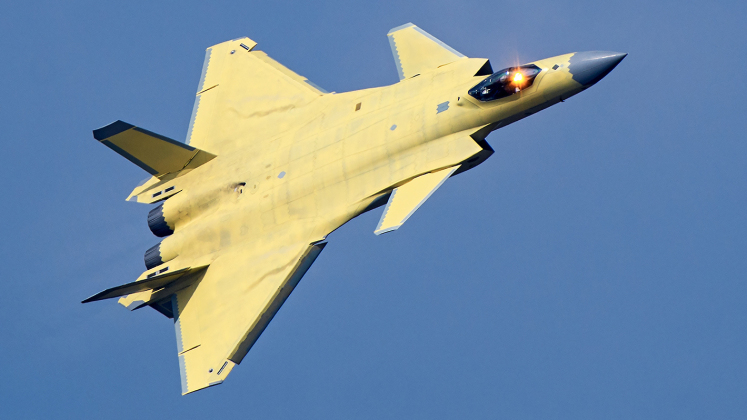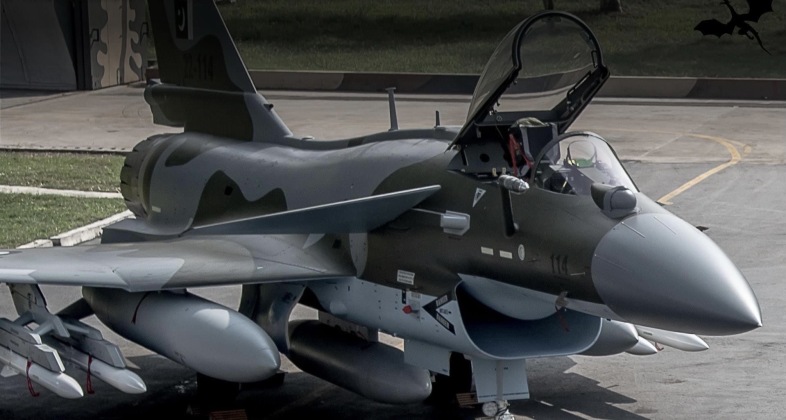News
Pakistan’s JF-17 Block III Finally Enters Service: Why This High Tech Little Fighter Will Revolutionise the Fleet

The Pakistan Air Force has reportedly formally begun to commission the JF-17 Block III fighter into service, with the long awaited combat aircraft seen to have a unique potential to revolutionise the country’s tactical combat aviation fleet due to its tremendous capability advantages over prior Pakistani fighters. Although unconfirmed reports indicated that the JF-17 had joined the fleet in March, more certain indications that the aircraft was actively serving emerged in November. The fighter class completed its first prototype flight in December 2019, before entering serial production in December 2020 and first appeared in Pakistan Air Force colours in March 2023. Due to its size, flight performance and general capabilities the JF-17 is considered broadly analogous to the Swedish Gripen as a ‘very light’ fighter which is significantly smaller and has much lower operational costs than fighters considered lightweights such as American F-16s and Chinese J-10s. Although fighters such as the F-16 were designed with low operational costs to allow the U.S. Air Force and allied fleets to widely integrate them into service without making major cuts to their fleet sizes, Pakistan’s lower defence budget and very large fighter fleet has made the JF-17 an optimal option to modernise frontline units without necessitating either a major budget increase or a significant reductions to the number of units fielded.
While the preceding two blocks of JF-17 fighters had relatively basic fourth generation level capabilities, with avionics comparable in sophistication to the F-16 Block 52, Gripen C/D or J-10A, the JF-17 Block III is considered a ‘4+ generation’ fighter with fifth generation level avionics. It is thus technologically equivalent to the F-16 Block 70/72, Gripen E/F or J-10C. Among the other avionics features setting it apart from prior variants are its KLJ-7A active electronically scanned array radar, next generation PL-15 and PL-10 air to air missiles, and new generations of helmet mounted sights. With the large majority of the JF-17’s technologies being of Chinese origin, despite it officially being a joint Sino-Pakistani program, the tremendous capability improvements seen on the latest JF-17 variant reflect the progress China’s defence sector has made over the past 15 years. China emerged in March 2017 as the second country in the world to field indigenous fifth generation fighters after the United States with the commissioning of the J-20 stealth fighter into service. Much like the J-10C, J-15B and J-16 fighters, many of the JF-17 Block III’s key technologies are derived from those of the J-20 placing the fighter’s avionics and armaments at the cutting edge.

The JF-17 Block III represents by far the least costly fighter class in the world that integrates avionics and missiles with such a high level of sophistication. This ensures that Pakistani fighter units fielding the aircraft will have comfortable advantages in many of the most crucial aspects of their performances over the vast majority of Indian or Iranian fighter units despite fielding aircraft with lifetime costs that are much lower. The PL-10 and PL-15 missiles, for example, have overwhelming performance advantages over the equivalent R-73 and R-77 missiles fielded by Indian Su-30MKI and Iranian Su-35 fighters being acquired by both countries from Russia, which helps compensate for the Su-30 and Su-35’s superior flight performances and ability to carry many more missiles and much larger sensor suites. While Pakistan in March 2022 began to field J-10C fighters, which are approximately 45 percent heavier and technologically similarly sophisticated compared to the JF-17 Block III, these are expected to form a select number of elite fighter units while the more affordable JF-17 Block III, which carries a smaller radar and has an inferior flight performance, is more widely fielded across the fleet.

Inducting the JF-17 Block III into service will allow the Pakistan Air Force to phase ageing Cold War era third generation fighters out of service – namely Mirage III, Mirage 5 and J-7 aircraft all of which are designs which predate the Vietnam War. It is expected that the JF-17 Block III will be acquired on a significantly larger scale than prior variants of the fighter, with its overall capabilities very significantly surpassing those of the F-16 Block 52 jets which until early 2022 formed the Pakistan Air Force’s elite particularly when comparing the sophistication of its sensors and air to air missiles. Where F-16 operations were significantly restricted by the United States in where they could be based, how they could be modified and where they could fly, China has imposed no comparable terms which ensures that Pakistan has significantly greater freedom in how it deploys its JF-17 and J-10 units.












